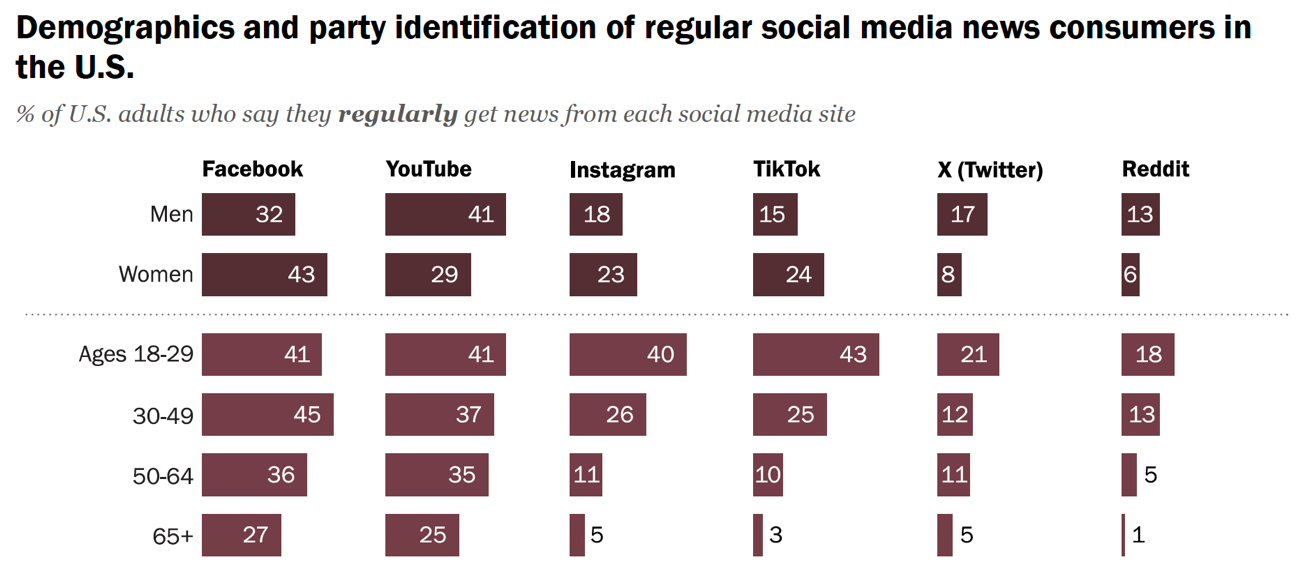Journalist vs. Creator
The line is blurrier than ever.
At the Democratic National Convention in Chicago last year, a debate began to take form: Should content creators, with their massive audiences and often partisan edge, get better access to candidates and surrogates than traditional journalists? It’s a fair question, and one that media executives and party strategists are weighing daily in our new media environment, where newsfluencers are racking up views.
This debate tugs at a bigger existential question. What’s the difference between a journalist and a content creator? That’s a question I find myself obsessing over and talking through with both journalist and content creator friends adnauseum. I don’t have a simple answer. Do you? (Paying subscribers can see what some of The Up and Up ambassadors had to say about this below the paywall)
When I left CNN to launch this Substack, most people thought I was crazy. But three years later, that decision (to leave a legacy outlet and start a newsletter, social-first series, or podcast) has become commonplace for journalists. Often it happens due to circumstance rather than choice.
On Tuesday, I wrote about how Gen Z’s use of TikTok for news has grown 5x since 2020. Beyond TikTok, Pew Research Center data shows that young adults ages 18-29 are the most likely demo to get their news on YouTube, Instagram, X, and Reddit — far surpassing 30-49-year-olds on Instagram and X especially.
When it comes to podcasts, young adults are also the most frequent listeners of any age cohort. It’s worth noting that their likelihood to have ever listened to a podcast has not changed from 2022 to today.
Just this week, a new initiative called the News Creator Corps announced its inaugural class of creators. Underscoring the media moment we’re in and the challenge many creators face when trying to deliver news, the program includes eight weeks of courses focused on traditional reporting skills: “sourcing, interviewing, fact checking, and debunking misinformation.”
According to the program’s executive director Rachel Lobdell, a media executive with experience at USA Today, Fortune, and Vice:
“More and more people are getting their news and information directly from content creators on platforms like TikTok, Substack, and podcasts. Instead of fighting against that, we are better served by equipping these creators, who care deeply about their audiences and want to get it right, with the fact checking and reporting skills typically found in newsrooms. That is how we are going to be able to fight misinformation.”
The News Creator Corps is a version of the future of news, and an example of what a newsroom can look like in 2025, where networks of creators act as journalists, trained just as traditional journalists are. But it doesn’t solve the larger creator vs. journalist question, and it tugs at a broader existential question in our democracy today: In a post-truth reality, who decides what’s fact from fiction?
The News Creator Corps works on the assumption that its content creators are interested in delivering fact-based news, and I’m sure that those in this cohort are. But not all creators share that mission. And not all consumers are well positioned or care to decipher between the two.
To learn more about how Gen Z is discerning between journalists and content creators, and fact from fiction, I checked in with The Up and Up community to ask some of our ambassadors what they see as the difference between a journalist and a content creator — and whether or not they’re more prone to listen to one over the other.
Upgrade your subscription to hear what they had to say….
🔑 What You’ll Unlock: Highlights from this edition
The Up and Up Community’s POV on journalists vs. creators
Their biggest concerns with their own media diets
Advice for legacy outlets on how they can get a leg up


